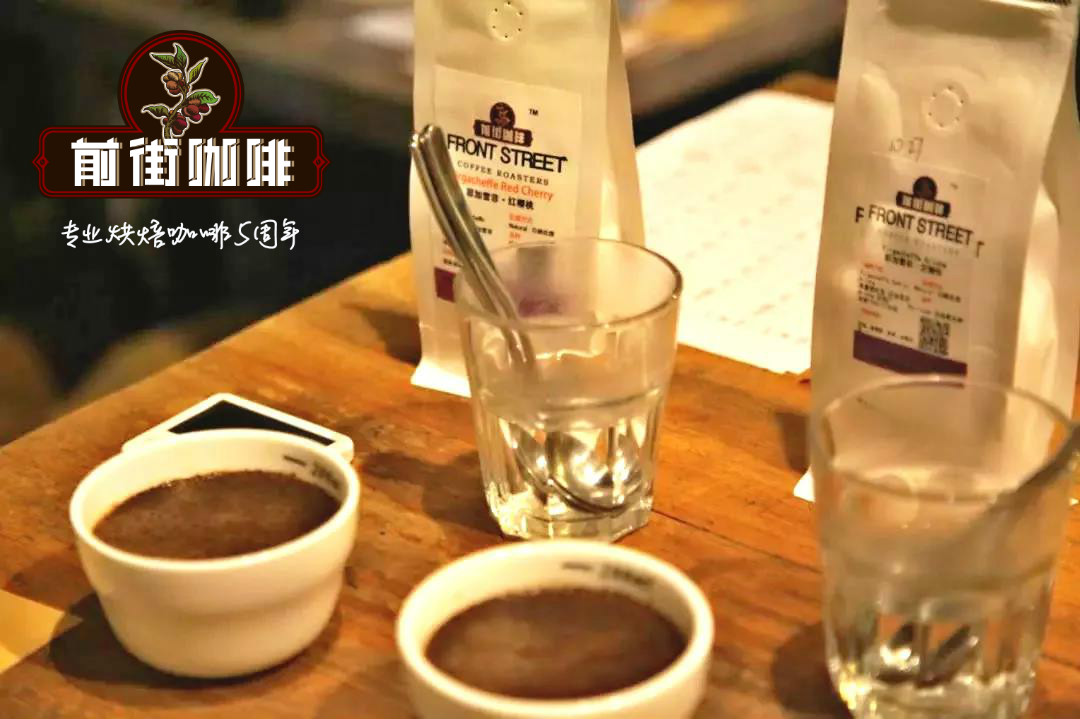How to appreciate the overall flavor of a cup of coffee? What are the skills of appreciating coffee?

Professional coffee knowledge exchange more coffee bean information please follow the coffee workshop (Wechat official account cafe_style)
Supervisor coffee should be carefully tasted in order to understand its essence, no matter what way the coffee is made, there is no need to rush to finish it. First smell the original aroma of the coffee, then take a sip to try the original flavor, then add the right amount of sugar as you like, and stir with a small spoon, taking advantage of the stirred coffee whirlpool, slowly add cream to float the oil on the coffee, on the one hand, keep warm, on the other hand, the heat of the coffee can also evaporate the milk flavor.
A cup of brewed coffee has three stages to monitor and appreciate. Generally speaking, it can be divided into three stages: the front, the middle and the back.
The first paragraph refers to the taste of coffee brewed at about 85 °. Good coffee should be fragrant, pure, strong and smooth in taste.
The middle section refers to the aftertaste of coffee at medium temperature. experts say that the medium temperature of coffee is in the mouth and can be divided into more than 100 aromas, which vary from person to person.
The latter part refers to the sweetness of the coffee after it is cooled.
Step 1: look at the eyes
In terms of the appearance of a cup of coffee, one spoon can be used to observe the appearance of a cup of coffee. Good coffee should be clear and shiny. If it is espresso espresso, there should be a layer of ochre red Cream, too dark coffee color represents excessive extraction, too light coffee color represents insufficient extraction, millet white is caused by too long extraction, and too little Cream may represent factors such as insufficient freshness of coffee or too coarse grinding or insufficient pressure filling.
Step 2: nose sniff
Appreciate the second level of flavor, starting with ground coffee. At this time, a large number of volatile aromatic compounds are released. To appreciate the dry aroma of coffee powder, it is best to use the method of "far and near", that is, to change the distance between the nose and coffee powder from time to time.
Because the sour flavor of flowers and fruits with the lightest molecular weight, commonly known as "fermentation catalysis" flavor, is highly volatile and will be released first, followed by the release of medium molecular weight caramel, nuts, chocolate and almonds, but the dispersion distance is shorter than the former, so get a little closer. Finally, the smell of high molecular weight turpentine, mercaptan and burnt aroma come out, because the molecule is the heaviest and the fragrance is the shortest, most of these smells are in the middle and deep roasting, so it is easy to catch the face and nose close to the top of the coffee powder. When appreciating coffee, often change the distance between the nose and coffee powder, more able to smell low, medium and high molecular weight aroma.
However, some volatile aromas cannot be gasified at room temperature and need to be boiled in hot water to release the aroma, which is the wet aroma of brewed coffee, that is, the third level of coffee flavor.
When appreciating, we also use the way of interaction between far and near to smell incense. At this time, the aroma of sour flowers and fruits, caramel, and defective potions, carbonization, wood and soil will be more obvious and more noticeable than dry aroma in the performance of wet aroma.
Step 3: mouthpiece
Dry and wet aroma belong to volatile aroma, as for the water-soluble taste of coffee after brewing, that is, the fourth level of flavor, it needs to be captured by the taste buds of the tongue. At the entrance of coffee, the sour, sweet, bitter and salty receptor cells of the taste buds immediately capture water-soluble flavor molecules. in principle, all regions of the tongue can feel the four tastes of coffee, but the tip of the tongue is sweet, both sides of the tongue are sour and salty, and the root of the tongue is more sensitive to bitterness. These four flavors contain each other and compete with each other, blindly too prominent, will inhibit or bless the performance of other flavors, and even affect the taste.
To taste coffee, you should not only drink it, but also smell it. Although there is no absolute formula for judging whether coffee is good or bad, mastering the following four principles commonly used by experts will help you understand and taste coffee:
Acidity (Acidity)
After the coffee is imported, the taste is light on the tip of the tongue, and the sour word looks eye-catching. In fact, the original taste and fresh vitality of coffee beans, just like wine, are contained in its sour taste. The acidity of fresh coffee, with fruit aroma, is just like the natural acid contained in lemon, grape, apple and other fruits. The taste is pleasant and fresh, which must be different from another word used to describe expired coffee, sour. Among the coffee, Yemenmoka coffee is famous for its strong acidity.
Texture (Body)
After sipping coffee, is the taste feeling lingering on the back of the tongue and mouth, strong or light? Mellow coffee, even if the concentration of coffee powder is not high, can still bring a strong taste shock. Generally speaking, Mexican coffee has the lightest taste, while Sumatra (Manning) coffee has the strongest texture. Heavy-flavored coffee is best mixed with milk, highlighting its mellow taste that cannot be concealed.
Aroma (Aroma)
Coffee is mellow in the air, from baking, grinding to brewing. Coffee beans try their best to release their fragrance at every stop of its long journey, so make good use of their sense of smell and experience the fragrant journey with the coffee.
Flavor (Flavor)
Connecting the above three to piece together the impression of coffee, some coffee flavors are diverse, sour, sweet, and bitter, while others are extremely sour, completely occupying the sense of smell and taste, and some people are used to using feeling to dominate judgment. does coffee have its own style? Does it have jungle or fruit aromas? Is your temperament gentle or masculine? This is the most emotional of all the tastes.
Important Notice :
前街咖啡 FrontStreet Coffee has moved to new addredd:
FrontStreet Coffee Address: 315,Donghua East Road,GuangZhou
Tel:020 38364473
- Prev

Why is espresso called espresso? If you want to know about coffee, you have to start with Italian!
For more information on coffee beans, please pay attention to the coffee workshop (Wechat official account cafe_style) Italian has a great influence in literature and art, which is probably inextricably linked to Italy as the birthplace of the Renaissance, and the Italian words borrowed in English more or less reflect this fact. But after all, literature and art belong to
- Next

Which is more refreshing, coffee or tea?
Please pay attention to coffee workshop (Weixin Official Accounts cafe_style) caffeine refers to caffeine, which belongs to methylxanthine group together with theophylline and theobromine that will kill Wang Xingren, but both molecular structure and physiological function are slightly different. Structurally, the latter two are one less methyl group than caffeine, and their excitatory effects on the human body are much milder than caffeine.
Related
- How did the Salvadoran coffee industry develop in Central America?
- What exactly does the golden cup extraction of coffee mean?
- The Origin of Coffee flower
- [2023 Starbucks World Earth Day] there are more meaningful things besides free Starbucks coffee!
- What kind of coffee is there in Spain? 9 Flavors of Spanish Coffee
- Aromatic African coffee| Kenya's coffee culture and historical production area
- Liberica Coffee Bean knowledge: the characteristics of Liberian Coffee beans of the three original species of Coffee beans
- The origin and formula of Spanish latte introduces the taste characteristics of Bombon coffee in Valencia, Spain.
- How to adjust the solution of over-extracted coffee
- What is the tasting period of coffee beans? What is the period of coffee and beans? How should coffee wake up and raise beans?

